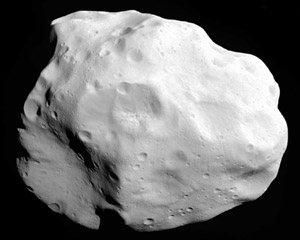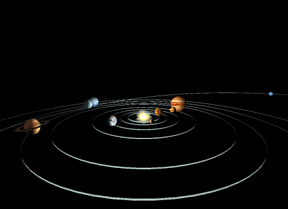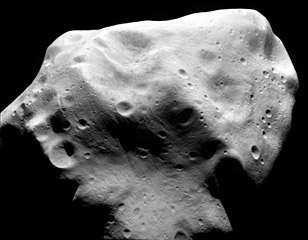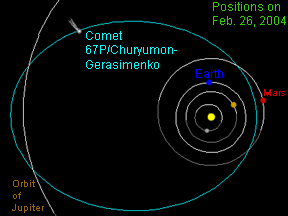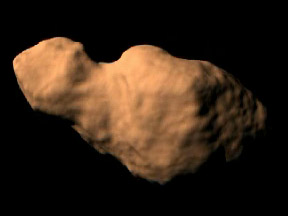Click on image for full size
Image courtesy of ESA 2010 MPS for OSIRIS Team MPS/UPD/LAM/IAA/RSSD/INTA/UPM/DASP/IDA.
Asteroid Lutetia
Lutetia is a medium-sized asteroid which orbits in the main asteroid belt between the planets Mars and Jupiter. It is officially known as "21 Lutetia" because it was the 21st asteroid discovered. The asteroid was first observed by the German-French astronomer Hermann Goldschmidt from the balcony of his apartment in Paris on November 15, 1852. Lutetia is the Latin name for Paris.
This lumpy object is roughly 96 km (60 miles) in diameter, though it is not quite a sphere. The asteroid measures 132 km (82 miles) along its longest axis and about 76 km (47 miles) along its shortest. The composition of Lutetia is somewhat mysterious; some evidence indicates that it is a metallic asteroid, while other data point to a rocky composition. The material that an asteroid is made of provides clues about the body's formation and history.
The European space probe Rosetta flew past Lutetia on July 10, 2010, giving us our first good look at the asteroid. Lutetia is the largest asteroid visited by a spacecraft to date, and the first M-type asteroid to be seen up close by a space probe. Rosetta passed within 3,160 km (1,964 miles) of the asteroid while travelling at a speed of 15 km/s (9 miles/sec or more than 33,000 mph). Rosetta sent some highly detailed images, as well lots of other data, back to Earth before continuing on its long journey to land on a comet in 2014.


